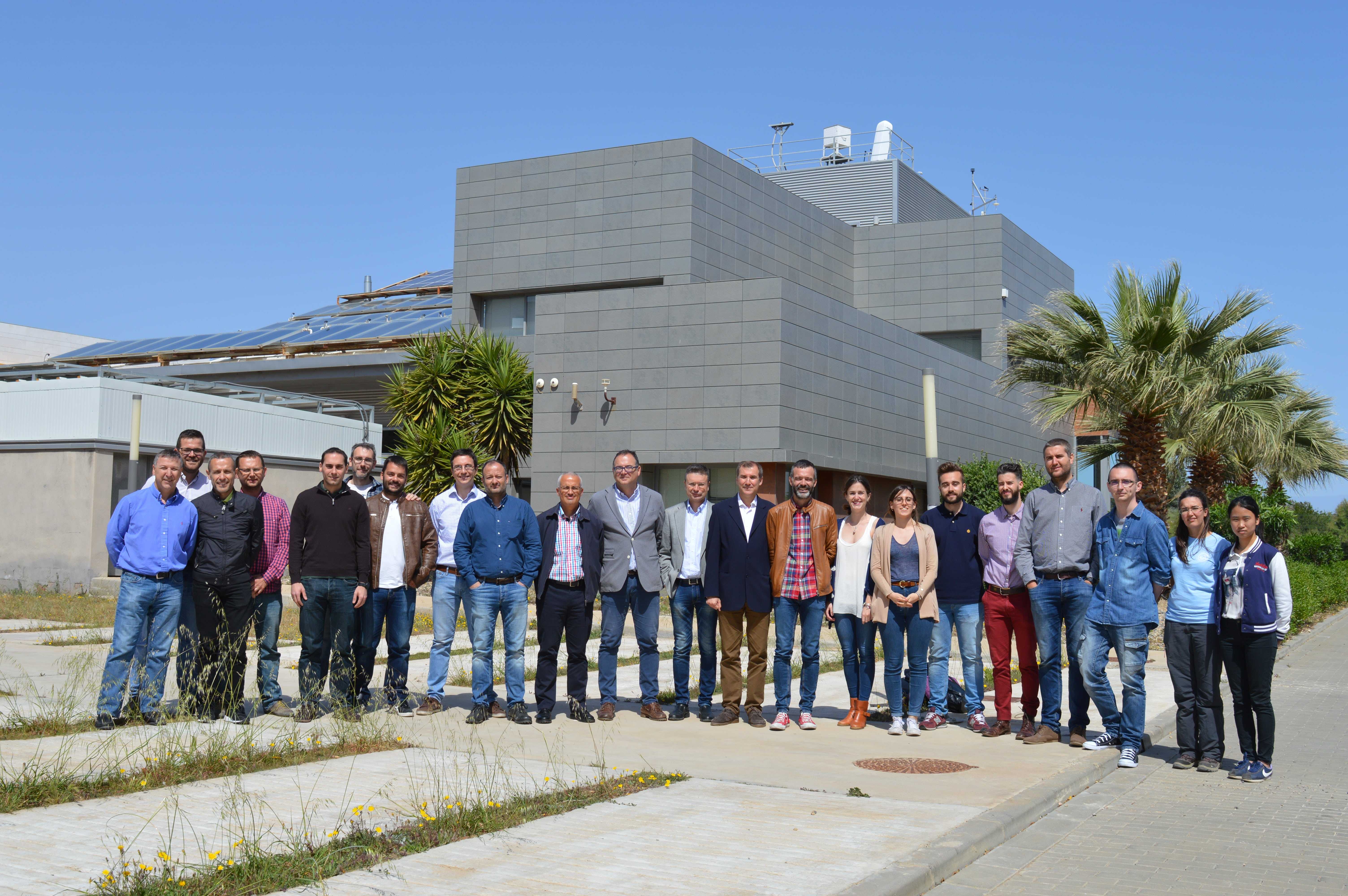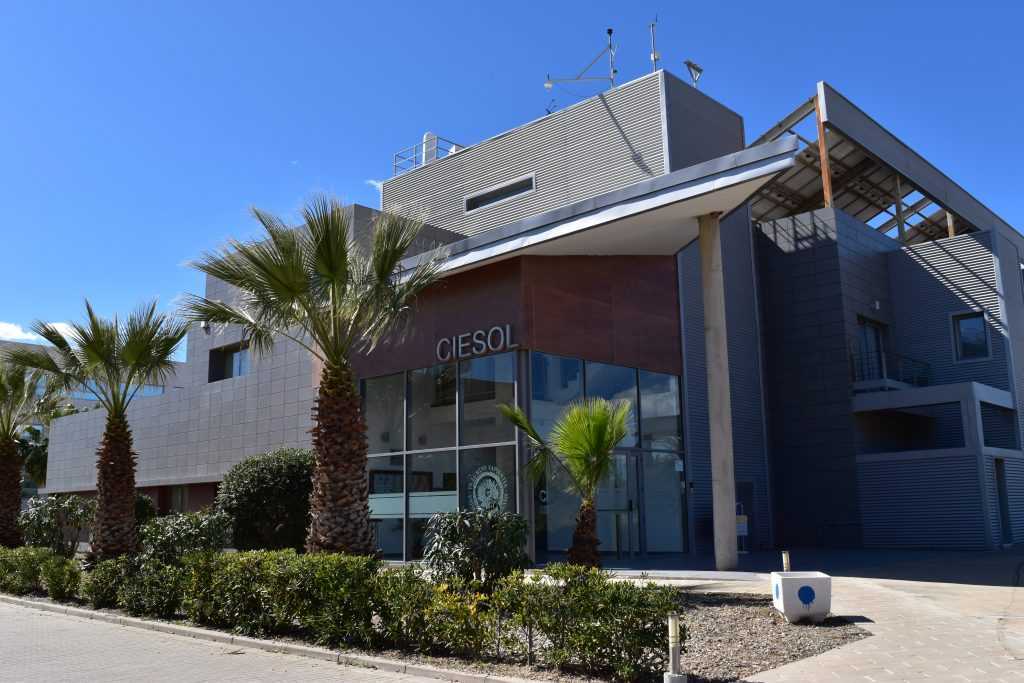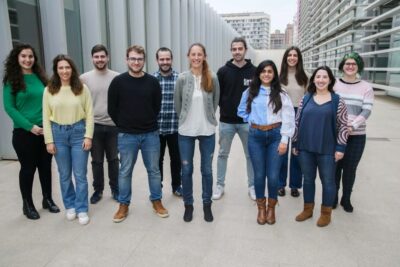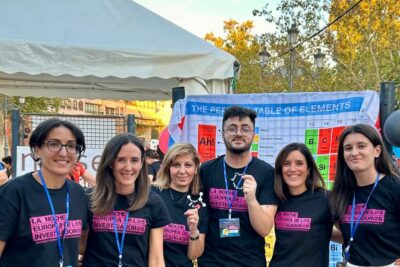Development of a system that adapts the temperature and lighting of each room in a building according to the outside climate
A research team from the University of Almería has designed an automatic prototype of temperature and illuminance control that achieves energy savings with an efficiency of 11%. In addition, it adapts to the activity that the user performs in a specific room. This software is integrated into existing heating, ventilation, air conditioning and lighting installations and takes advantage of renewable energy devices, if available, to manage energy consumption and reduce costs.
A research team from the University of Almeria has designed an automatic software program that predicts the right temperature for the users of a building and adapts it to their activity in a specific room. The prototype works with a mathematical model that adjusts the heat according to variables such as the outside climate -to obtain an energy saving of 11%- and the thermal and lighting comfort of the user. In addition, the system uses renewable energy installations in an autonomous way to achieve more efficient consumption, reduce CO2 emissions and save costs.
This system analyses typical days at different seasons of the year and the program decides what temperature and illuminance are best suited to each particular room, based on criteria such as weather conditions outside and human activity carried out in each specific room. «Normally, adapting to the thermal and lighting needs of each user at any given time involves more energy expenditure because the user constantly adjusts the air conditioning systems to adapt them to his or her liking, which depends on each person’s subjective viewpoint. The aim of this technology is to balance well-being with spending», Francisco Rodríguez, researcher at the University of Almería, explains to Fundación Descubre.
The results obtained over a full year of operation of this system have been gathered in the study entitled ‘Multiobjective control architecture to estimate optimal set points for user comfort and energy saving in buildings,’ published in ISA Transactions. Researchers explain that, depending on the outside weather conditions, the type of work carried out in each room of the building, the available energy sources (renewable and traditional) and the cost of each one of them, the system autonomously defines a set of solutions that allow building users to work in thermal comfort and with adequate lighting, as well as with low energy consumption.
Subsequently, the system applies mathematical models to predict the climatic conditions both outside and inside different rooms, as well as the energy generated by the building’s auxiliary renewable energy facilities. This is how the program decides which solution is best suited to each particular room. Researchers remark that it is possible to introduce additional criteria so that the system can analyse more ways of improving the thermal and lighting comfort of the user. «Work carried out in a laboratory is not the same as the activity performed in an office or gymnasium. Each room requires a different temperature setting for the well-being of those performing each activity. The device determines the ideal settings autonomously,» says Francisco Rodríguez.
Tested prototype
To develop this program, the Automatic Control, Robotics and Mechatronics group first analyses the needs of each user and relates them to the energy consumption of the building over a given period of time. By doing so, they define current deficiencies and study the performance of the existing heating, ventilation and air-conditioning systems.
Generally, this system operates on buildings that consume electrical energy; however, the system itself ‘chooses’ the optimal energy source when the building has additional energy resources in order to save costs, taking into account the needs of the facility. For example, if there is a photovoltaic plant with storage available, the system will assess whether it is more economical to use this type of energy when it is generated or to take it from the electricity grid. This saves costs if the system predicts high power consumption for several hours when the price of the electricity supply network is higher.
Researchers have tested this system in the CIESOL building of the Solar Energy Research Centre (UAL-CIEMAT),1 where there are spaces for offices, laboratories, industrial warehouses and meeting rooms, during the months of March to July. They explain that to implement this system in another construction it would be necessary to collect data for at least a year previously in order to adapt the parameters used by the system for predicting suitable temperature and lighting in that new environment. The researcher Francisco Rodríguez remarks: «The prototype of this device is still in use in the first building where it was installed. We believe that it is ready to be adapted to any other building.»
This research has been carried out with funding from the Chromae Project (DPI2017-85007-R), the State Plan for Scientific and Technical Research and Innovation 2017 of the Spanish Ministry of Science and Innovation, the European Regional Development Fund (EU-ERDF) and University of Almeria’s own funds.
1 CIESOL (http://www.ciesol.es) is a solar energy research centre located on the University of Almeria campus, in south-east Spain.
Spanish version: Desarrollan un sistema que adapta la temperatura e iluminación de cada sala de un edificio según el clima exterior
References
M. Martell; F. Rodríguez; M. Castilla; M. Berenguel. (2020) ‘Multiobjective control architecture to estimate optimal set points for user comfort and energy saving in buildings’. ISA Transactions 99, 454–464
Más información:
#CienciaDirecta, agencia de noticias de ciencia andaluza, financiada por la Consejería de Transformación Económica, Industria, Conocimiento y Universidades de la Junta de Andalucía.
Teléfono: 954 232 349
Additional documentation
Research Group on Automatic Control, Robotics and Mechatronics.
CIESOL building of the Solar Energy Research Centre (UAL-CIEMAT).
Últimas publicaciones
Investigadores de la Universidad Pablo de Olavide colaboran en un estudio pionero liderado por el Centro de Investigación Príncipe Felipe que acelera la recuperación en animales tras una lesión medular y que tiene su base en la molécula AMPc.
Sigue leyendoEl estudio, publicado en la revista Bioorganic Chemistry, identifica moléculas capaces de bloquear una interacción clave en la progresión de este tipo de tumor. La investigación se ha centrado en el cáncer de mama triple negativo, un subtipo que no responde a los tratamientos hormonales convencionales ni a terapias dirigidas a otros receptores habituales, lo que limita gravemente las opciones terapéuticas.
Sigue leyendoInvestigadores del CSIC señalan que los cambios climáticos y el aporte de agua desde ríos y lagos explicarían los datos que muestran una cuenca marina casi vacía y, al mismo tiempo, llena de agua a finales del Mioceno.
Sigue leyendo






